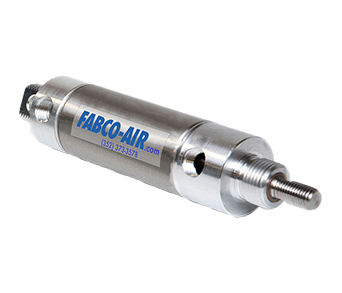Pressure-driven actuators serve a vital role in various industrial applications, providing accurate control over equipment and processes by converting air pressure into kinetic motion. Such devices are known for their effectiveness and reliability, allowing for rapid movement and automation across diverse sectors. However, there are circumstances where relying solely on automated solutions can pose challenges, particularly during emergencies or maintenance scenarios. This is where the concept of manual overrides comes into play.
A pneumatic actuator with manual override offers a level of control that guarantees operators can intervene directly when needed. This feature is crucial for protection, enabling personnel to override automated operations to prevent accidents or manage unexpected issues. By providing a physical means to control the actuator, operator overrides improve operational adaptability and stability, making them an necessary consideration for effective pneumatic system configuration. Understanding their value can help companies better safeguard their processes and maintain system integrity under multiple conditions.

Significance of Manual Interventions
Human interventions are vital in pneumatic actuation systems as they ensure dependability in situations where automated management may malfunction or be impaired. These systems rely heavily on pneumatic forces to function, but unforeseen problems such as power loss, system malfunctions, or obstructions can happen. Having a human-operated intervention feature allows that operators can act immediately, maintaining authority over the device and avoiding hazardous situations or costly interruptions.
In addition, human overrides enhance operational versatility. In different industrial applications, modifications may need to be made swiftly and efficiently. When an user can manually control a compressed air actuator, it allows for prompt response to shifting conditions, such as changing loads or rapid changes in process requirements. This flexibility is especially important in settings where operations are fluid and can vary frequently.
Ultimately, incorporating a human intervention not only boosts security but also boosts trust among operators and technicians. Knowing that a manual option is available helps alleviate worries about relying solely on automatic systems. This dual functionality guarantees that workers can perform their duties efficiently and react swiftly in emergencies, thereby leading to a more secure and more productive environment.
Types of Manual Override Systems
Manual control systems in pneumatic actuators can vary significantly based on construction and operation. One typical type is the handwheel system, where a circular handle is manually turned to physically adjust the actuator's position. This is a simple method that allows operators to easily intervene and control the actuator by hand. Handwheels are often favored in applications in which exact positioning is required, as they provide tactile feedback and allow for gradual adjustments.
Another type of manual override is the lever arm mechanism. This system utilizes a handle that can be pulled or pushed to manipulate the actuator. Lever systems are advantageous in situations in which space is tight, as they require fewer room to operate compared to handwheels. They can also be designed for rapid engagement and disengagement, making them effective for applications that need rapid response or frequent manual control without the need of tools.
Lastly, there are electric manual control systems that combine both pneumatic and electric control. In these designs, an electric motor can provide hand control when the pneumatic system fails or when precise electronic control is required. This approach is advantageous in complex systems in which automation is integrated, allowing for both manual and automated operations. Electric-powered overrides typically come with controls that can be used from a distance, adding ease of use to the user experience while maintaining reliability in pneumatic actuator functionality.
Applications and Perks of Manual Control
Manual overrides in pneumatic systems are essential in multiple applications, especially in industrial settings where reliability and safety are critical. In industrial processes where automation is common, having the capability for manual operation can be critical during crises or equipment failures. Personnel can quickly take action to ensure the system operates effectively, preventing downtime and likely risks.
Another major benefit of manual controls is the convenience of maintenance and diagnostics. When a pneumatic actuator encounters issues, the option to manually operate the system allows engineers to examine and fix problems without needing significant interruptions or system interruptions. This hands-on capability boosts operational effectiveness in demanding environments.
Additionally, manual overrides contribute to better safety measures. In scenarios where rapid response is needed, such as in emergency alarms or equipment malfunctions, the ability to manually control can help avoid accidents and reduce risks. pneumatic actuator and handwheel can manage the actuators by hand, ensuring a rapid response that automated systems might not provide in time-sensitive situations. This aspect highlights the value of having manual controls integrated into pneumatic systems.
